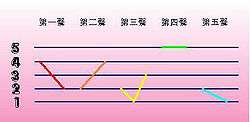Chang-Du Gan
Chang-Du or Chang-Jing, sometimes called Nanchang (simplified Chinese: 南昌话; traditional Chinese: 南昌話; pinyin: nánchāng huà) after its principal dialect, is one of the Gan Chinese languages. It is named after Nanchang and Duchang County, and is spoken in those areas as well as in Xinjian, Anyi, Yongxiu, De'an, Xingzi, Hukou, and bordering regions in Jiangxi and in Pingjiang County, Hunan.
| Chang-Du | |
|---|---|
| Nanchang | |
| Native to | China |
| Region | Northwestern Jiangxi |
| Language codes | |
| ISO 639-3 | None (mis) |
| ISO 639-6 | cagj |
| Glottolog | chan1317[1] |
| Linguasphere | 79-AAA-fad |
Phonology
The Nanchang dialect has 19 syllable onsets or initials (including the zero initial), 65 finals and 5 tones (counted as 7 in Chinese classifications).[2]
Initials
In each cell below, the first line indicates IPA transcription, the second indicates pinyin.
| Bilabial | Dental/ Alveolar |
(Alveolo-) palatal |
Velar | Glottal | ||
|---|---|---|---|---|---|---|
| Nasal | m m 麻 |
ɲ gn 魚 |
ŋ ng 牙 |
|||
| Plosive | plain | p b 巴 |
t d 打 |
k g 加 |
||
| aspirated | pʰ p 怕 |
tʰ t 讀 |
kʰ k 卡 |
|||
| Affricate | plain | ts dz 渣 |
tɕ j 脊 |
|||
| aspirated | tsʰ ts 茶 |
tɕʰ ch 喫 |
||||
| Fricative | ɸ f 花 |
s s 紗 |
ɕ sh 寫 |
h h 蝦 | ||
| Lateral | l l 啦 |
|||||
Finals
The finals of the Nanchang dialect are:[3]
| - | -i | -u | -n | -ŋ | -t | -k | ||||||||||||||||||
|---|---|---|---|---|---|---|---|---|---|---|---|---|---|---|---|---|---|---|---|---|---|---|---|---|
| - | a 扯 |
ɔ 何 |
ɛ 許 |
ɹ̩ 柿 |
ə 儒 |
ai 敗 |
əi 噯 |
au 抱 |
ɛu 茂 |
əu 周 |
an 闲 |
ɔn 漢 |
ɛn 痕 |
ən 分 |
aŋ 正 |
ɔŋ 裝 |
uŋ 共 |
at 八 |
ɔt 撥 |
ɛt 北 |
ət 不 |
ak 百 |
ɔk 剝 |
uk 鹿 |
| -i- | ja 惹 |
jɛ 佢 |
i 眉 |
jɛu 廟 |
iu 酒 |
jɛn 淹 |
in 隱 |
jaŋ 井 |
jɔŋ 獎 |
juŋ 供 |
jɛt 革 |
it 乙 |
jak 脊 |
jɔk 腳 |
juk 菊 | |||||||||
| -u- | wa 話 |
wɔ 禾 |
wɛ 哇 |
u 母 |
wai 懷 |
ui 委 |
wan 灣 |
wɔn 換 |
un 滾 |
waŋ 梗 |
wɔŋ 廣 |
wat 滑 |
wɔt 活 |
wɛt 國 |
ut 勿 |
wak 摑 |
wɔk 擴 |
|||||||
| -y- | ɥɛ 瘸 |
y 豬 |
ɥɔn 軟 |
yn 笋 |
ɥɔt 絕 |
yt 戍 |
||||||||||||||||||
Consonantal codas
| Syllabic nasals | m̩ 姆 |
n̩ 汝 |
ŋ̩ 五 |
|---|
| consonantal finals | -p | -t | -k | -m | -n | -ng |
| IPA | [-p] | [-t] | [-k] | [-m] | [-n] | [-ŋ] |
| Example | 十 | 八 | 百 | 咸 | 限 | 横 |
- The codas in italic are at present only reserved in several Gan dialects.
Tone
Like other Chinese varieties, tones in Gan make phonemic distinctions. There are five phonemic tones in Gan, which are reduced to two 'entering tones' before stop consonants. In the traditional classification, these are considered separately:

| Tone number | Tone name | Pitch numbers | IPA transcription (on a) |
|---|---|---|---|
| 1 | upper level | (42) | a˦˨ or â |
| 2 | lower level | (24) | a˨˦ or ǎ |
| 3 | rising | (213) | a˨˩˧ or á̀́ |
| 4 | upper departing | (55) | a˥ or á |
| 5 | lower departing | (21) | a˨˩ or à |
| 6 | upper entering | (5) | ak˥ or ák |
| 7 | lower entering | (21) | ak˨˩ or àk |
The 6th and 7th tones are the same as the 4th and 5th tones, except that the syllable ends in a stop consonant, /t/ or /k/.
Example
A poem of Meng Haoran (“Men Hau-len” in Gan):
| 春曉 孟浩然 | Cun Hieu – Men Hau-len | |
|---|---|---|
| 春眠不覺曉, | cun mien bhut gok hieu, | |
| 處處聞啼鳥。 | cu cu mun ti tieu. | |
| 夜來風雨聲, | ya loi fung ui sang, | |
| 花落知多少? | fa lok zi do seu? |
References
- Hammarström, Harald; Forkel, Robert; Haspelmath, Martin, eds. (2017). "Chang-Jing". Glottolog 3.0. Jena, Germany: Max Planck Institute for the Science of Human History.
- Yan (2006), p. 150.
- Yan (2006), pp. 150–151, based on Hanyu Fangyin Zihui.
- Běijīng dàxué zhōngguóyǔyánwénxuéxì yǔyánxué jiàoyánshì. (1989) Hànyǔ fāngyīn zìhuì. Běijīng: Wénzìgǎigé chūbǎnshè.(北京大學中國語言文學系語言學教研室. 1989. 漢語方音字匯. 北京: 文字改革出版社)
- Norman, Jerry. [1988] (2002). Chinese. Cambridge, England: CUP ISBN 0-521-29653-6
- Yuán, jiāhuá (1989). Hànyǔ fāngyán gàiyào (An introduction to Chinese dialects). Beijing, China: Wénzì gǎigé chūbǎnshè. (袁家驊. 1989. 漢語方言概要. 北京:文字改革出版社.)
External links